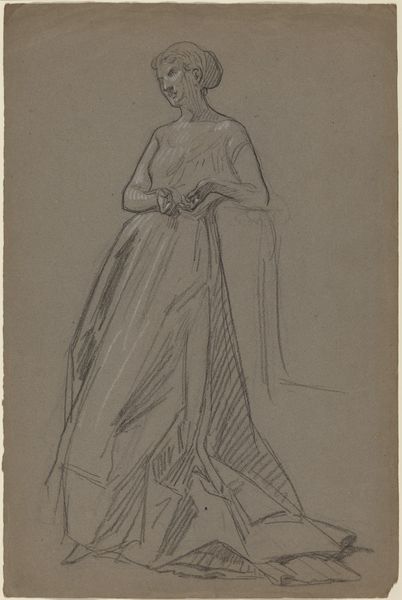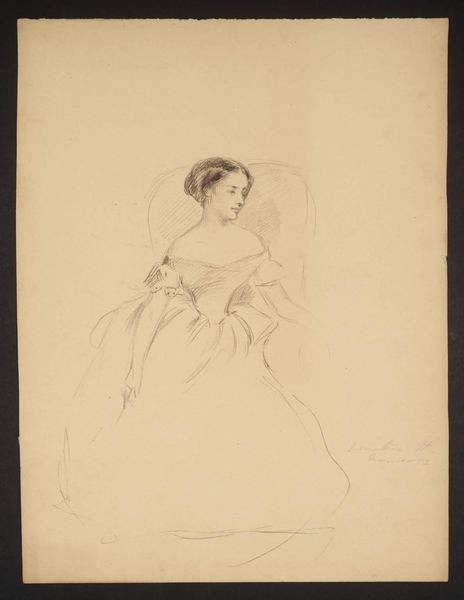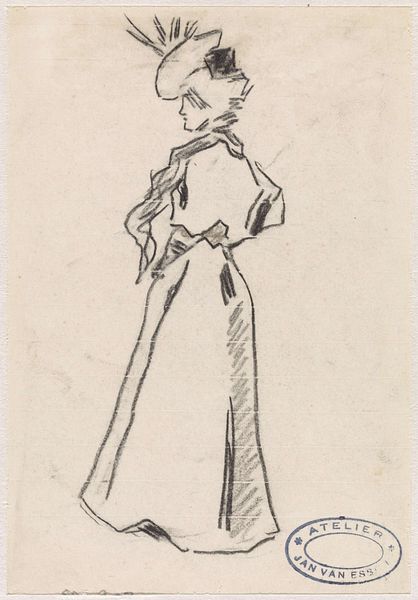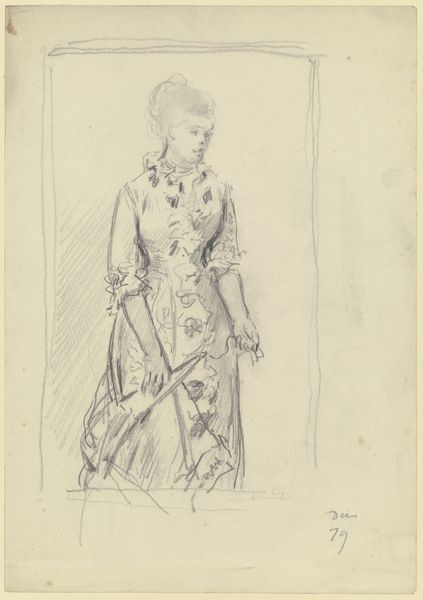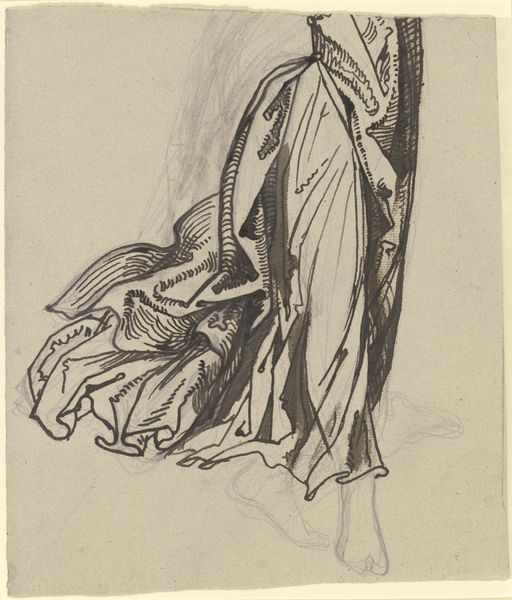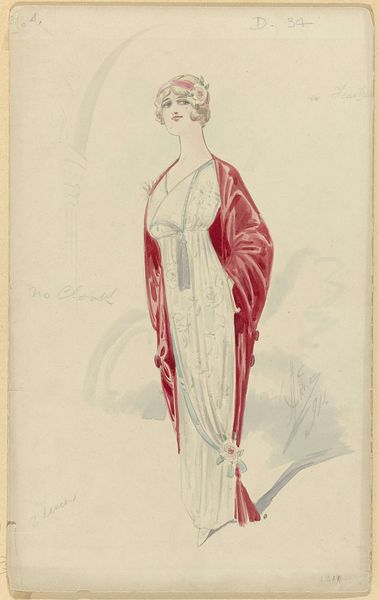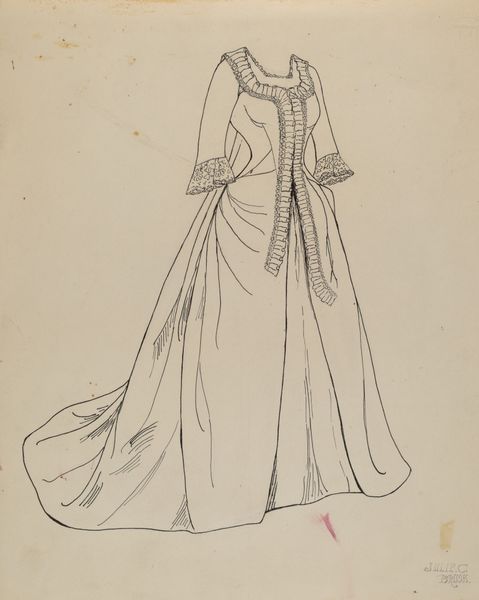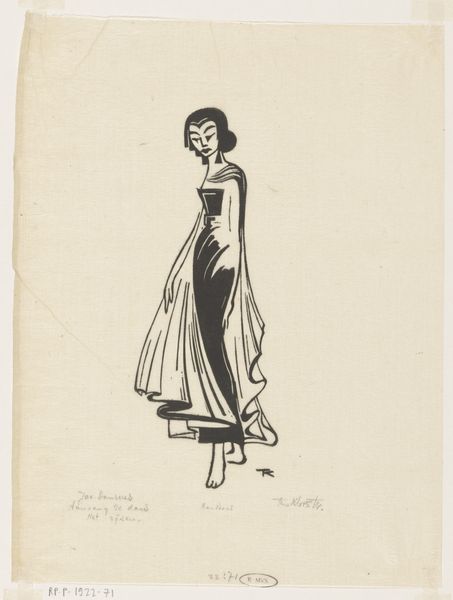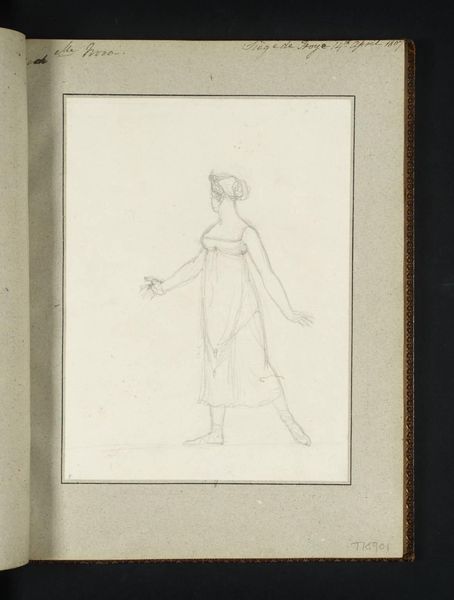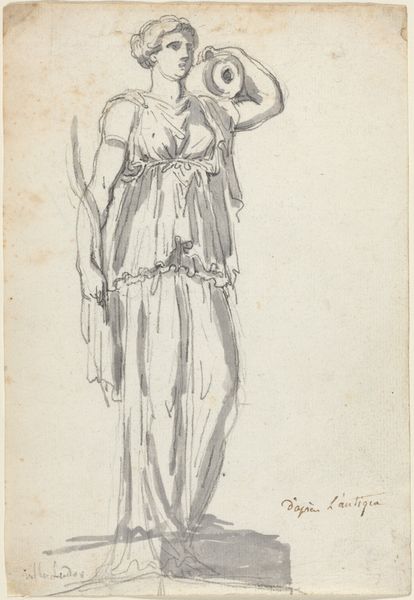
Journal des Dames et des Modes, Costumes Parisiens, 1914, No. 165 : Robe à danser (...) 1914
0:00
0:00
drawing, paper, ink
#
portrait
#
drawing
#
art-nouveau
#
figuration
#
paper
#
ink
#
history-painting
#
dress
Dimensions: height 177 mm, width 108 mm
Copyright: Rijks Museum: Open Domain
Editor: Here we have "Journal des Dames et des Modes, Costumes Parisiens, 1914, No. 165: Robe à danser..." created in 1914 by Gerda Wegener. It's an ink drawing on paper. I’m really struck by how delicate the line work is, almost ethereal. How would you interpret this work? Curator: Considering Wegener’s broader artistic output and the period in which this was created, I think it’s crucial to examine the role of fashion illustration itself as a mode of production. Look at the meticulous detail – what labor went into capturing the nuances of this dress, and what does that say about the intended consumer? Also, what is the significance of “Parisian costumes” just before the conflagration of World War I? Editor: That’s fascinating! I hadn’t considered the context of the impending war. So you’re saying the drawing is less about the artistry and more about the cultural and economic moment? Curator: Not exclusively. But we need to see how Wegener is working within, and perhaps against, the grain of this particular industry. Was she critiquing or celebrating consumerism? What did it mean to create images of idealized femininity right before societal norms were shattered? Editor: I see. The act of creating this piece and the means of its distribution were, in a way, just as vital to its significance as the image itself. The paper, ink, and the printing process—all those things become part of the artwork's meaning. Curator: Exactly. The materiality and production are not secondary. What kind of paper was used? Was it mass produced? Every choice impacts the cultural meaning, even the economic pressures impacting material sourcing. Editor: This gives me a lot to think about, considering not just what is depicted, but how it came to be. It's a whole other layer of interpretation that really enriches my understanding. Curator: Indeed. Analyzing the physical aspects and the socio-economic context behind the artwork helps reveal its full depth and significance.
Comments
No comments
Be the first to comment and join the conversation on the ultimate creative platform.
